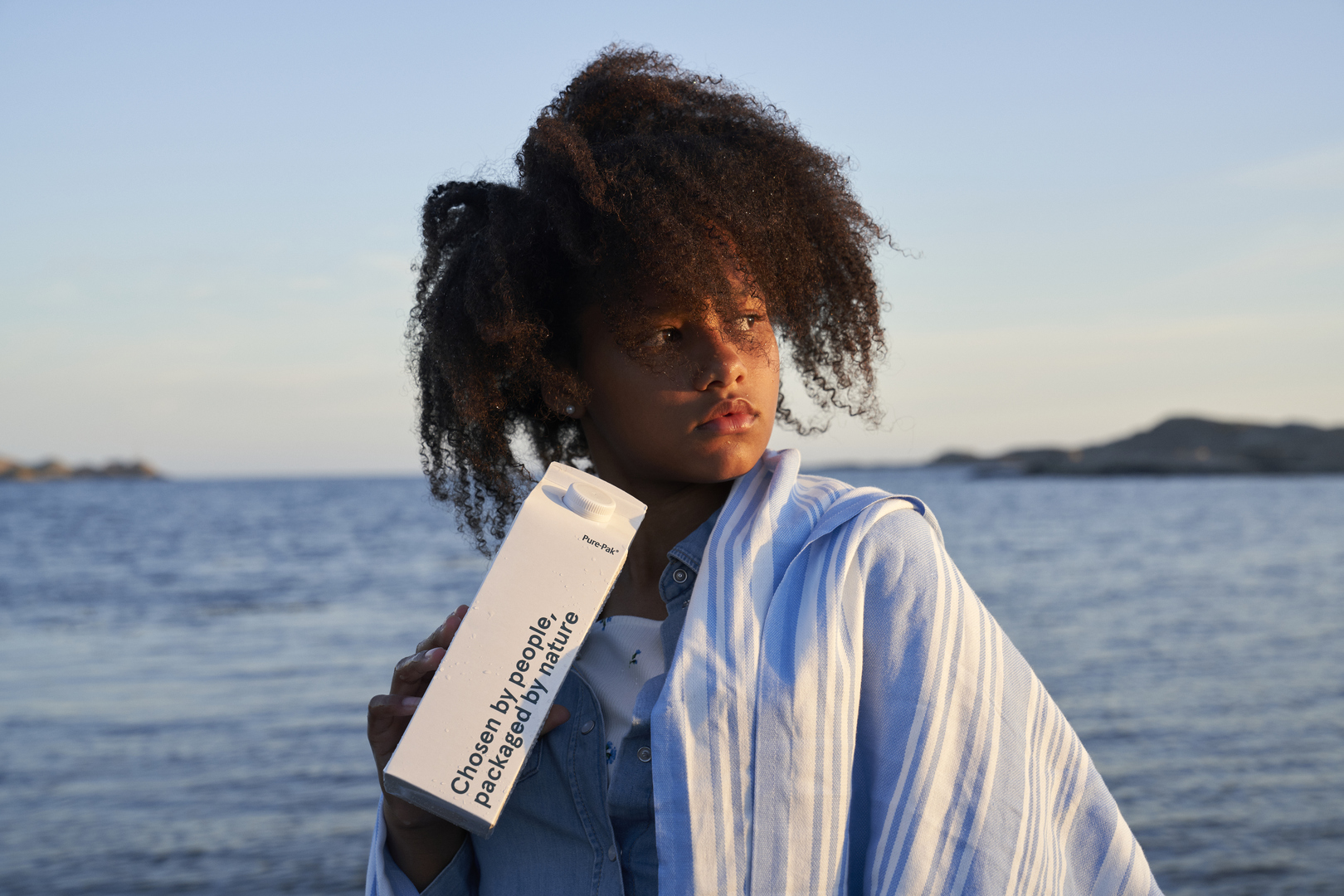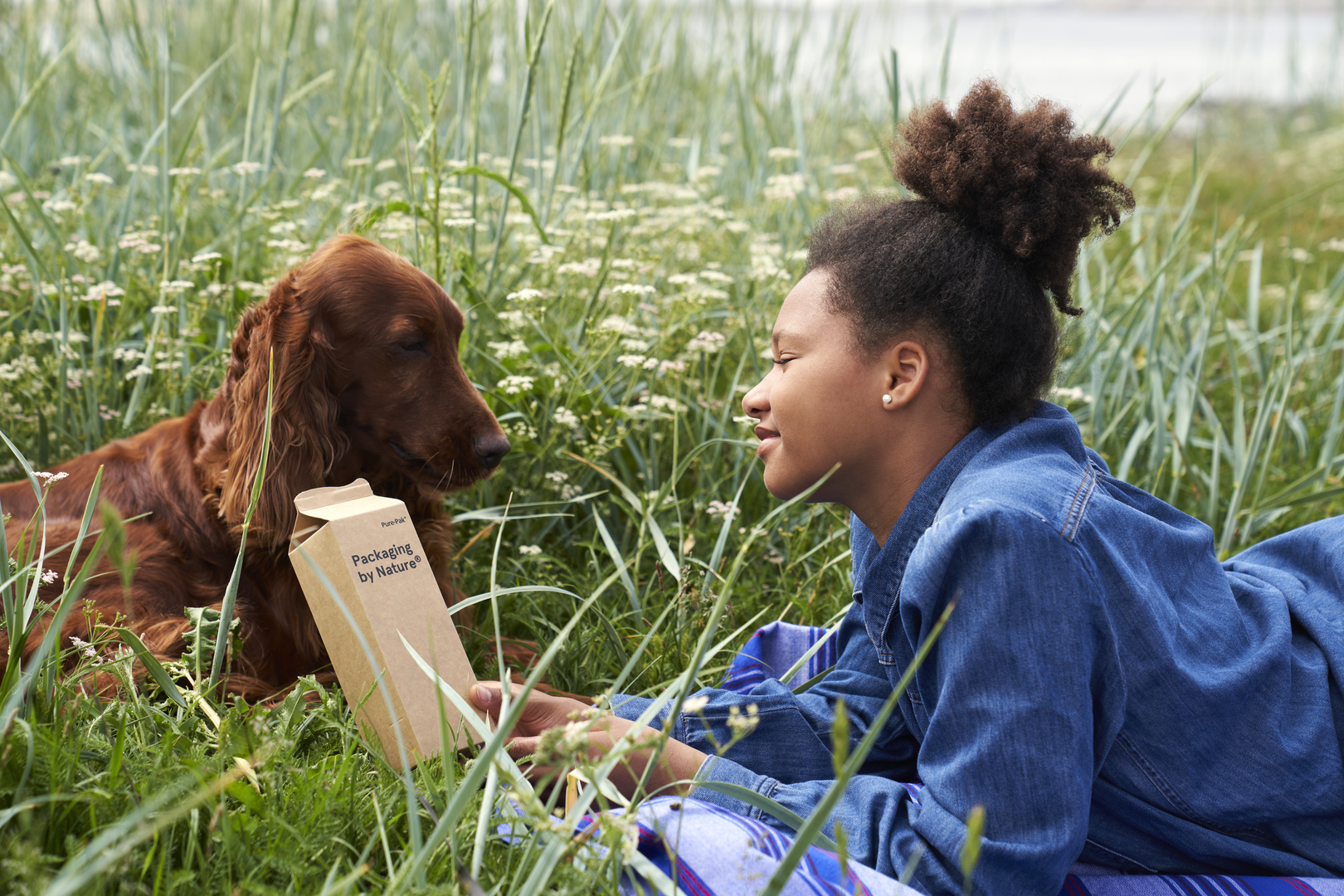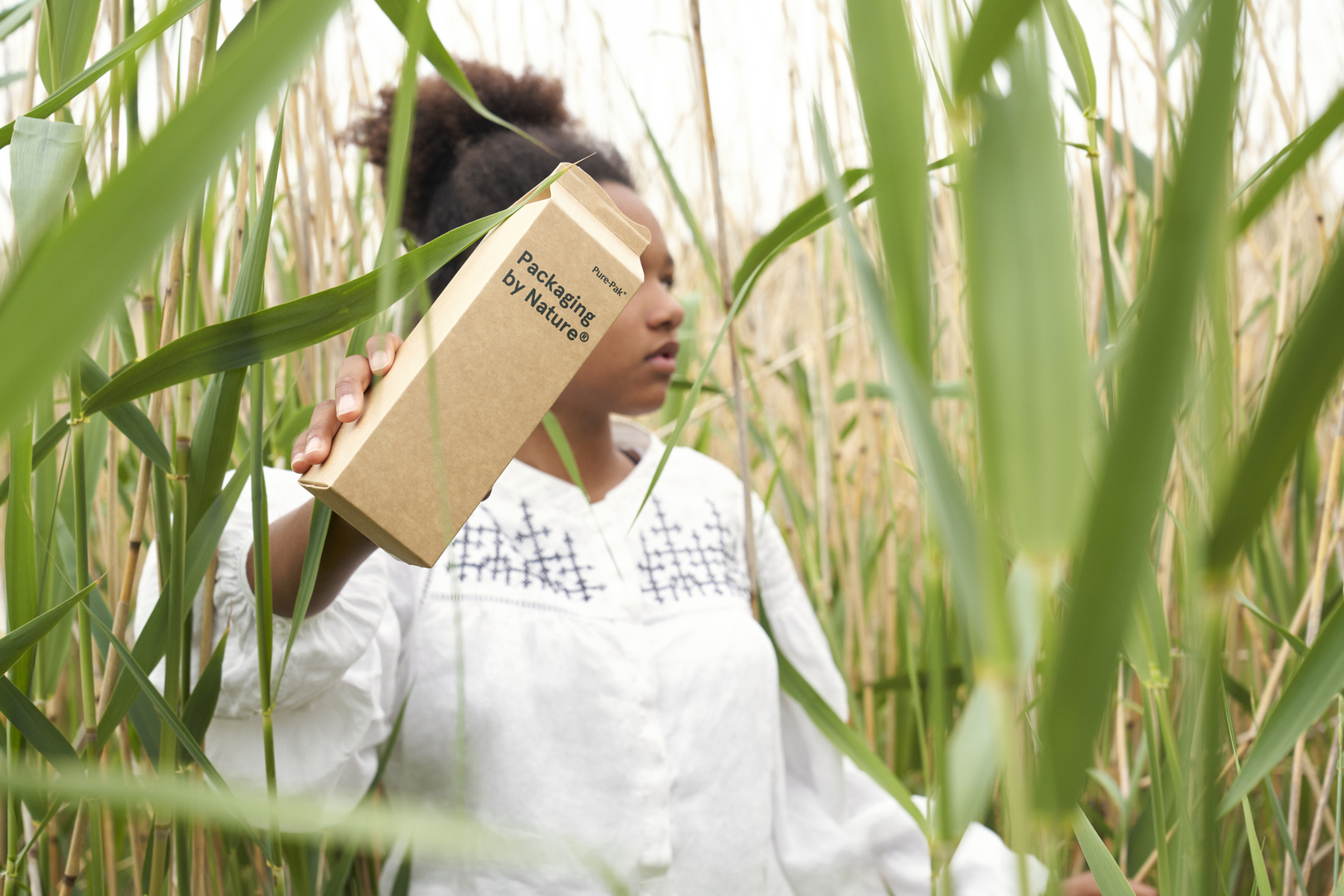Methodology – People and planet
In this chapter we provide background information, sources and assumptions for the various KPIs.
Our employee data is provided by corporate HR on an aggregated level.The majority of Elopak’s employees are employed in the Netherlands (475), Denmark (285), Canada (298), Germany (268), Russia (181), and Norway (170). Data is presented per continent (Europe incl. Russia), Americas and MENA (Middle East and North Africa).
There are two types of temporary workers in Elopak. Some are hired on a temporary contract, others are hired through agencies. At the end of 2021 there were 99 temporary workers from agencies registered (these are not listed in the data tables). Elopak does not have any major seasonal variations in its workforce.

Health and Safety
Elopak has historically used the industry norm Lost Time Injury (LTI) rate as the high-level safety KPI. To bring more attention to all safety incidents, the focused high-level KPI has been changed to Total Recordable Injury rate, TRI.
The TRI Rate refers to the number of recordable injuries occurred per 1 million hours worked. A recordable injury is a separate, identifiable, unintended incident, which occurs as a direct result of work, causes physical injury, and for which corrective action can normally be identified. This includes deaths, permanent disabilities, Lost Time Injuries, Restricted Work Case injuries, and Medical Treatment Case injuries, where treatment from a medical professional is required.
Employability
The number of employees who have completed performance dialogues are registered as per March 1st 2022, due to the current cycle of this process.
Diversity and inclusion
Elopak considers the following levels of management in the organization:
- Top management – The group leadership team
- Level 2 management – anyone reporting to a member of the group leadership team
- Other line management – anyone with responsibility for one or more employees at various levels in the organization (e.g. plant managers)
Responsible supply chain
Elopak defines key suppliers as suppliers of our main raw materials (paperboard, polymers and aluminium). When we refer to “% of suppliers by spend” in the KPIs, this means suppliers accounting for a certain % of the total spend for the reporting year (in this case 2021).
We use the Ecovadis assessment program to quantify suppliers being assessed for social and environmental impacts.
Planet
Our environmental data shows the development of Elopak’s environmental impact each year. Some of the indicators have been reported annually since 2008.
In this report, we have only included some of the years, but previous data can be found in the previous years’ reports, available on our website: www.elopak.com/publications
Renewability and recycled content
For calculations of % renewability, we consider the paperboard to be 100% renewable, although it may contain other minor non-renewable components. We base this assumption on ISO 14021 (allowing de minimus amounts). Further, we consider renewable PE sourced through a mass balance system to be 100% renewable. The calculations are based on Elopak’s DEEP (Dynamic Elopak Environmental Performance) tool, further described below.

Net zero
Emission-related data are reported according to the Greenhouse Gas (GHG) Protocol, including the updated revisions of the GHG Protocol Scope 2 Guidance (2015). Emissions are split in three scopes, 1, 2 and 3, as described in the figure below.
Elopak reports according to the ‘operational control’ consolidation approach, which covers all Elopak’s wholly owned market units and converting, roll-fed, coating and filling machine plants worldwide. Elopak’s greenhouse gas data is reported in both CO₂ equivalents (CO₂e) and the separate greenhouse gases.
GHG emission intensity (g CO2e/produced carton) is our total scope 1+ residual scope 2 + scope 3 (business travel) emissions divided by the total number of cartons produced in all plants. Energy intensity (kWh/produced carton) is calculated by dividing the energy consumption in all production plants by the total number of cartons produced in all plants.
All data included in scope 1 and 2 emissions and the parts of scope 3 emissions that are included in our Science Based Targets, are third-party verified. One exception is that only Elopak controlled transport is audited.
Elopak has three joint ventures, one in the Dominican Republic, one in Mexico and one in Kenya. In line with the operational control consolidation approach, the joint ventures are excluded from the Scope 1 and Scope 2 reporting. GHG emissions related to Elopak’s joint ventures are reported under Scope 3 category 15 – Investments. The two production plants in the Dominican Republic and Mexico report their data in our online portal, Footprinter. The office in Kenya is not a production unit and emissions are estimated based on the number of employees and location.
As announced in October 2021, Elopak has signed a Share Purchase Agreement to acquire Naturepak Beverage Packaging Co Ltd. The acquisition was not finalized in 2021 and is thus not included in the 2021 report.
Emission factors
For 2021 reporting, all electricity emission factors (scope 2) were updated according to the latest 2021 International Energy Agency’s (IEA) database, known as “CO₂ Emissions from Fuel Combustion.” All site fuels (Scope 1), district heating (Scope 2), and business travel and transportation (Scope 3) emission factors were also updated according to the latest 2021 DEFRA (UK Department for Environment, Food & Rural Affairs) emission factors. By updating all emission factors annually, we are more in line with market realities and emission factor developments since we first began reporting in 2008. The emission factor used for the renewable electricity (market-based approach) is based on a Life Cycle Assessment study of the power plant and is 0,00219 (kg CO₂e/kWh). For other Energy Attribution Certificates (EAC), an emission factor of zero is applied.
Elopak’s Science Based Targets
Elopak has committed to cut greenhouse gas emissions in line with the strictest criteria set by the Science Based Targets (SBT) initiative. In 2021, Elopak set near-term science-based targets for each emission scope, in line with the new Net zero standard from SBTi. Compared to last year’s reporting, the baseline year has changed. The previous targets had a timeframe of 13 years (2017-2030), while the near-term targets have a timeframe of 10 years (2020-2030).
Elopak has committed to cut Scope 1 (and residual scope 2) emissions by 42% by 2030 from a 2020 baseline, to continue to purchase renewable electricity for the entire consumption at all Elopak wholly owned sites, and to cut Scope 3 emissions by 25% by 2030 from a 2020 baseline. Scope 1+2 targets are in line with the 1,5°C pathway while the scope 3 targets are in line with the “Well below 2°C” pathway as defined by SBTi.
The new baseline for 2020 was calculated in 2021 for submission to the SBTi. Evaluations showed similar results to the previous evaluations from 2017. The calculations showed that scope 3 is the biggest contributor to GHG emissions in Elopak, accounting for almost 99% of the total GHG emissions.
When setting internal emission targets for scope 3 in line with the SBTi guidance, we calculated and evaluated the emissions related to each of the Scope 3 categories. The criteria in the SBTi guidance for selecting categories in scope 3 to be included in the target are that the chosen categories must cover at least two-thirds of the total Scope 3 emissions and that there must be an appropriate level of ambition.
Elopak’s criteria to evaluate the significance of the scope 3 categories:
- They are significant in terms of contribution to emissions. No specific threshold was established, but this was considered in conjunction with the other criteria below.
- They are Integral to the function of the business.
- The data quality allowed for developing meaningful reduction initiatives.
- The potential was identified for developing a target to galvanize internal engagement in decarbonization (Ex: Category 6: Business Travel).
These criteria are regularly revised.
Category 3, 7, 8, 10, and 14 are excluded from the scope 3 near-term target, as these categories contribute to less than 0,5% of the total scope 3 emissions, hence not fulfilling criteria 1 above.
The emissions in scope 3 category 1, purchased goods and services, included in Elopak’s SBT, are related to the raw materials used to produce cartons, closures, and coated boards sold to external customers, and production waste. The remaining emissions in category 1 that are excluded from the near-term target are related to business goods and services. These emissions account for 10% of the total scope 3 emissions and are excluded based on evaluations of criteria 2 and 3 above. Emissions in category 2, purchased capital items, account for 4% of the total scope 3 emissions. These emissions are excluded from the near-term target based on evaluations of criteria 2 and 3 above. Emissions in category 12, End-of-life treatment of sold products, account for 13% of the total scope 3 emissions. This category accounts for a significant part of the total scope 3 emissions but based on evaluation of criteria 3 above and the 67% threshold set by the SBTi guidance, it was decided to exclude this category from the near-term target. Emissions in category 15, investments, are related to Elopak’s joint ventures and account for 1% of the total scope 3 emissions. This category is excluded from the scope 3 near-term target based on evaluation of criteria 1 above.
Some categories in scope 3 account for less than 0,5% of the total scope 3 emissions but are still included in the scope 3 near-term target. An example is category 6 business travel. This category is included based on the evaluation of criteria 4 above.
Renewable electricity
Elopak utilizes the market-based allocation method for the Scope 2 accounting. In 2021, Elopak utilized Guarantees of Origin (GOs) and I-RECs to cover the electricity consumption of the production and administrative facilities in Europe. For North America (Canada and the USA), Elopak utilized a similar system, Green-e certified Renewable Energy Certificates (RECs). GOs, I-RECs and RECs are systems to trace the source of electricity produced. The purchase is based on actual electricity consumption at various Elopak sites within Europe and North America in 2021.
The European Energy Certificate System (EECS) is the official European system for Renewable Energy Certificates (RECs) created to enable cooperation within the renewable energy market across borders. When the GO is used by a consumer, it is canceled in the system to prevent double counting. More renewable energy demand leads to more investment in renewable energy and less greenhouse gas emissions. Every country participating in the energy certificate system has a central organization that oversees the national markets for GOs. In addition, the European system as a whole is overseen by the Association of Issuing Bodies. This ensures the credibility of the energy certificate system.

Emission reporting
Scope 1
Elopak’s scope 1 emissions include all direct emissions in our facilities:
- consumption of natural gas
- consumption of propane
- consumption of diesel
- consumption of wood
Scope 2
Elopak’s scope 2 emissions include electricity and district heating
Scope 3
Changes in our scope 3 reporting:
- Previously, Elopak has only reported on the scope 3 categories included in our Science Based Targets. This year, Elopak reports the total scope 3 emissions.
- Emissions in scope 3 category 1, Purchased goods and services related to materials wasted in production, have been included in Elopak’s scope 3 Science Based Target.
- Elopak has increased the scope of the external scope 3 verification. For 2021, all scope 3 emissions included in Elopak’s near-term target have been externally verified.
Below is a description of the methodology and assumptions made for the different categories
Category 1 – Raw materials
To calculate the carbon footprint of our products, we use internal calculations, verified by a third party. We use an internal tool called “DEEP – Dynamic Elopak Environmental Performance” (version 12.0 for Europe and version 5.0 for Americas), which is a cradle-to-gate calculation that considers all emissions connected to the production of all raw materials, as well as Elopak’s own operations, including final conversion and all transportation up to the delivery at Elopak’s customers’ gate. While all these steps are included in the DEEP tool for carbon footprinting of our products, only raw material emissions are included in scope 3 category 1 calculations since the other elements are included in other categories. The scope covers all Elopak’s fully owned operations.
The methodology is in line with the ISO standards for Life Cycle Assessments (ISO 14040 and 14044). The Product Category Rules (PCR) for beverage cartons are followed where relevant for the carbon footprint calculation methodology (PCR Beverage Cartons 2011:04 Version 1.0), developed in accordance with ISO 14025:2006.
- Primary data is used for Elopak’s own operations and the production of some raw materials.
- Internal production data is taken from Elopak’s reporting tool, “Footprinter” (2021 data).
- Purchase of renewable energy certificates.
- Internal transport data is calculated based on reporting from Elopak’s units (2021 data).
- Suppliers’ primary data is used for key raw materials.
- Secondary data is sourced from LCA databases where this is relevant, such as EcoInvent, and studies for some of the raw materials, such as PlasticsEurope and the European Aluminium Association, as specified in the beverage carton PCR.
The emissions reported for 2021 related to scope 3 category 1, purchased goods and services (raw materials), have been calculated by Anthesis Consulting Group and verified by SGS.
Category 1 – Business goods & services
These emissions include upstream impacts associated with goods and services procured by Elopak during the reporting year, not included in other purchased goods calculations or other reporting categories. Emissions are estimated using Environmentally Extended Input-Output factors, based on Elopak’s spend across different categories per year (Based on Elopak’s spend cube). These are not included in the scope of our SBTs.
Category 2 – Purchased capital items, Capital Goods
These are upstream impacts associated with capital items procured by Elopak during the reporting year, not included in other purchased goods calculations or other reporting categories. Emissions are estimated using Environmentally Extended Input-Output factors, based on Elopak’s spend across different categories per year (Based on Elopak’s spend cube). These are not included in the scope of our SBTs.
Category 3 – Fuel and Energy-Related Activities
Extraction, production, and transportation of fuels and energy purchased or acquired by the reporting company in the reporting year, not already accounted for in scope 1 or scope 2. Calculated based on Elopak’s annual energy consumption using Transmission and Distribution and Well-to-Tank factors. These are not included in the scope of our SBTs.
Category 4 & 9 – Transportation and distribution
Elopak reports on emissions related to third-party transport. This reporting includes transporting all goods from suppliers’ gates via Elopak to customers’ gates. Whether the transportation is purchased and handled by Elopak, our suppliers, or customers, all data is gathered.
In Elopak, third-party transport is split into inbound, internal, and outbound. Inbound and internal transportation includes transportation of purchased raw materials and semi-finished products. Outbound transport includes all shipments of manufactured products to customers. We have used a tonne-kilometer approach in estimating transport emissions, as it is a straightforward and consistent method. Furthermore, the input required for this approach is more readily available than the input required for the vehicle-kilometer approach. With the former, we do not need to have complete control over the loading of goods. This approach will most likely overestimate transport emissions and thus is a valid conservative approach.
The emissions reported for 2021 related to scope 3 (category 4), upstream and downstream transportation and distribution (under Elopak’s operational control), have been third-party verified by SGS. Emissions reported in category 9 (upstream and downstream transportation and distribution not under Elopak’s operational control) has not been third-party verified.
Emissions related to WTW (Well to wheel) and WTT (Well to tank) has been calculated and are included in the scope of the SBT, but are not included in the data published. We aim to include these in future years’ reports.
Category 5 – Waste generated in operations
This category includes downstream processing of waste coming from Elopak’s factories and offices. The total tonnage of waste is multiplied by emissions factors for the processing of each waste type. These are not included in the scope of our SBTs.
Category 6 – Business travel
Elopak reports on emissions from business travel, both from flights and cars, by gathering data from all Elopak units through different portals. Due to the implementation of a new business travel management system, Elopak has improved the emission reporting from business travel flights in the past years.
Some Elopak units are still reporting business travel manually in the internal reporting system, Footprinter. All data from the new system and Footprinter is compiled and calculated to get information on the total emissions related to business travel in Elopak. The emissions reported for 2021 related to scope 3 category 6, business travel flights, have been third-party verified by SGS.
Category 7 – Employee commuting
Includes emissions from Elopak employees traveling to and from work. We also calculate the (optional) emissions associated with Elopak employees working at home. For employee commuting, we use estimated travel distances and modes from the UK National Transport Survey and emissions factors per transport type to estimate the impact per commuter-day. For calculating homeworking emissions, Anthesis’ methodology is used to estimate the incremental emissions associated with each person-day of working from home.
It is assumed that only factory employees traveled to work during periods of quarantine and office closure.
These emissions are not included in the scope of our SBTs.
Category 8 – Upstream leased assets
This is found in Elopak’s spend cube. For 2020 and 2021, there were no upstream leased assets for Elopak.
Category 10 – Processing of sold products
Not applicable for Elopak.
Category 11 & 13 – Filling machines in operation
Elopak produces and purchases filling machines and sells and leases these machines to customers. The use of sold and leased filling machines at customer sites is a part of Elopak’s scope 3 emissions and is included in the near-term target. Leased machines are considered in Elopak’s ownership, and hence consumption and emissions are calculated for one year. For machines sold, the emissions are calculated for the estimated lifetime of the machine, which in this approach is set to 20 years.
To calculate the emissions related to filling machines, Elopak maps all filling machines sold and leased using an internal CRM tool. Emissions are calculated per machine, considering consumption during operation and cleaning and applying relevant emission factors. Estimated operation time for all the filling machines was assumed. Assumptions and calculations are made in Elopak’s Total Cost of Ownership (TCO) tool, version 8.1.3 (Dec 2021).
IEA per-country electricity consumption factors are applied according to the customer’s country. Factors for chemicals and transport are taken from Ecoinvent 3.4. Another key presumption is that current-year electricity factors are applied to the lifetime electricity consumption. i.e., no provision is made to estimate a future reduction in grid electricity emissions.
The emissions reported for 2021 related to scope 3 category 11 and 13, use of sold products and downstream leased assets (filling machines), have been calculated by Anthesis Consulting Group and verified by SGS.
Category 12 – End-of-life treatment of sold products
Emissions associated with the processing of Elopak products at the end of life. Total sales for the reporting year are used, along with carton recycling statistics, to estimate the total tonnes of different materials (board, caps) going through different treatments every year. These totals are combined with emissions factors for the downstream processing of different materials. These emissions are not included in the scope of our SBTs.
Category 14 – Franchises
Not applicable for Elopak
Category 15 – Investments
Scope 1 & 2 impacts of Joint Ventures, calculated using the operational energy consumption of joint ventures reported in Footprinter, and estimates for the office. These emissions are not included in the scope of our SBTs.

Carbon neutral company and packaging
The carbon-neutral company certification includes offsetting of all emissions related to the manufacturing process, transport, and business travel. This certification is in accordance with the PAS2060 standard. Carbon neutral packaging extends the scope of emissions to include all the emissions associated with the cartons (raw material production, waste, and onward distribution). Carbon neutral packaging is certified according to The CarbonNeutral Protocol. All calculations are verified by an independent third-party, Anthesis Consulting Group. Company emissions are offset via South Pole. Packaging emissions are verified and offset via Natural Capital Partners.
In 2021, Elopak supported three projects for our carbon-neutral company certification. The projects are verified according to international standards used in the voluntary offset market, respectively VCS (Kenya agriculture and Isangi forest conservation project) and CDM (Clean Development Mechanism under the Kyoto Protocol – Landfill gas project Mexico). Certificates are issued by South Pole.
The projects supported for carbon-neutral packaging in 2021 were also verified according to the international standards used in the voluntary offset market, respectively Gold Standard (Water boreholes – Kenya) and CDM (Clean Development Mechanism under the Kyoto Protocol – Efficient cookstoves – Ghana). The mangrove planting project is an additional project not creating carbon offsets. Certificates are issued by Natural Capital Partners.
Other environmental impact disclosures
In Elopak’s Footprinter reporting portal, the sites report other environmental impacts, such as waste and consumption of water. We have initiated a project to verify and improve data quality in these areas and disclose the data from 2022 onwards.
